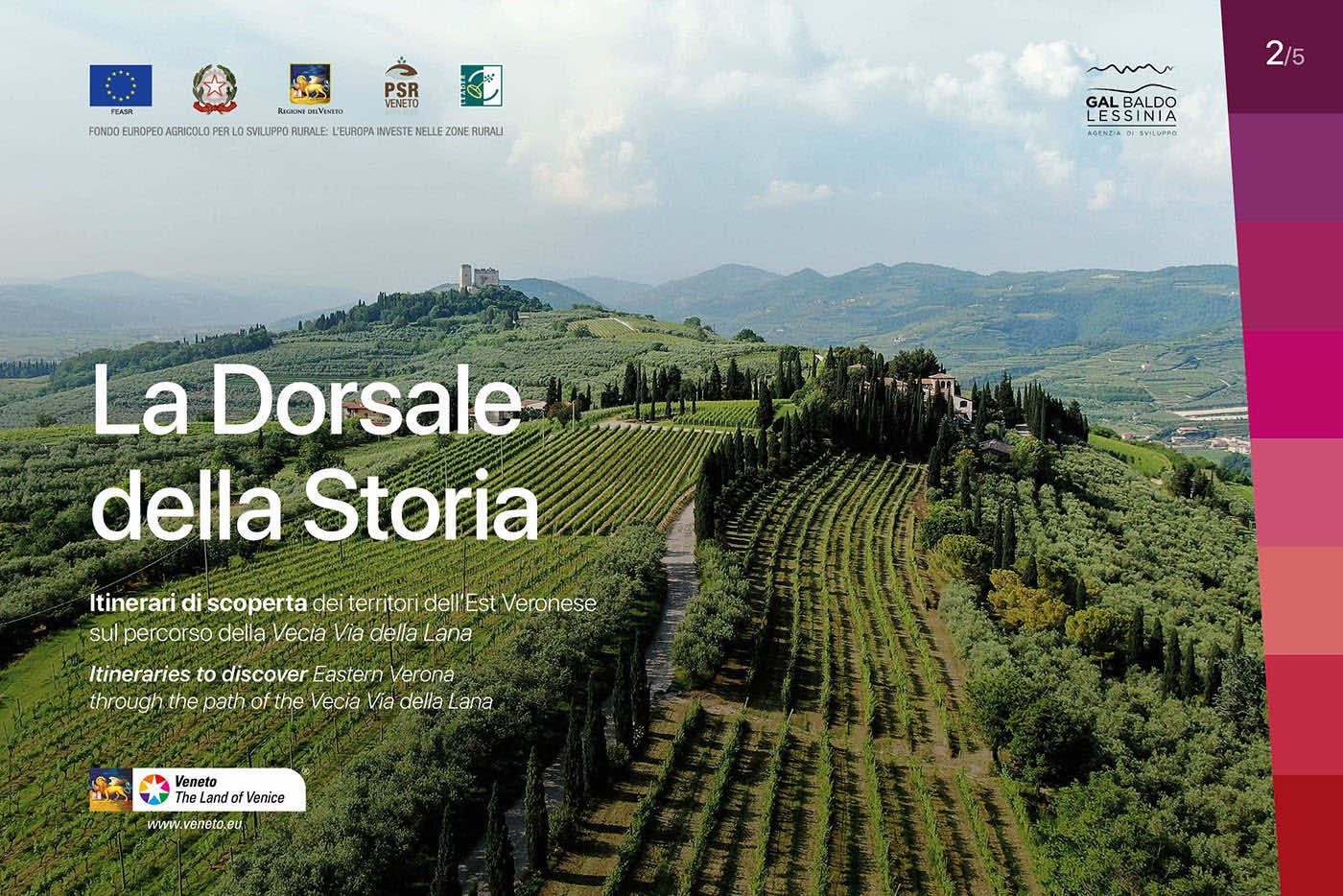itinerary 7 - monteforte d'alpone
The evocative hills of Monteforte d’Alpone
Monteforte d’Alpone, the last municipality of the Val d'Alpone, is located at the foot of gentle hills inhabitated by man since prehistoric times. In order to get to know better these splendid places, we recommend this easy itinerary which, through amazing rural landscapes, ancient historical buildings and religious folk art, will allow you to reach the slopes of the Riondo, Rocchetta, Frosca and Zoppega hills and cross the picturesque Val Ponsara.
Hiking trail

Technical data of the route
7 km
DISTANCE
+200 m
Elevation Gain
2:30 h
estimated time
POINTS OF INTEREST

The Palazzo Vescovile of Monteforte
Next to the town hall stands the Episcopal Palace, built in the second half of the fifteenth century by Bishop Ermolao Barbaro. With an imposing and massive appearance, it is structured around a two-story Renaissance cloister with a central well. Inside, one can admire frescoes and paintings, including Girolamo dai Libri’s “Christ and the Samaritan Woman at the Well of Jacob.”

Church of Sant’Antonio Abate
The church was built by the bishops at the end of the 13th century on the ruins of the castle, using materials from the castle itself. It is dedicated to the patron saint against cattle diseases. In 1537, the church underwent exterior alterations, as evidenced by the date engraved on the stone lintel of the side door. Towards the end of the 16th century, the patronage of the church passed to the municipality, which erected an elegant Baroque altar with statues and faux marble spiral columns in 1650, as well as renovating the apse. In the past, the apse housed an old wooden crucifix from the 16th century called 'Cristo Moro', which is now preserved in the parish church.

Oratory of San Carlo Borromeo
The small church of San Carlo Borromeo in Monteforte was commissioned by the Boniotti family in the early 17th century and was part of a larger family villa built in the previous century. The interior consists of a cross-vaulted hall with two windows and a raised apse. On the walls are stucco decorations and a triglyph band. The altar, attributed to Domenico Curtoni, has Ionic columns and a tympanum and is reminiscent in appearance of the one in the Church of Sant'Elena, adjacent to Verona Cathedral. The altar once housed an altarpiece painted by Claudio Ridolfi, but this was lost in unclear circumstances during or after World War II.

Download PDF brochure
All itineraries, technical information, insights and points of interest on La Dorsale della Storia and the Vecia Via della Lana.


